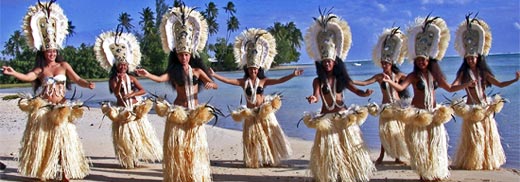All About Tahitian Dance

This quiz will ask questions pertaining to Tahitian dance styles and Tahitian dance history. It will also ask about tahitian costume making and oral traditions.
- 1.
What does "Otea" mean?
- A.
Dance of Life
- B.
Drum Dance
- C.
Dance of Love
- D.
Hip shaking dance
- E.
All of the above
Correct Answer
E. All of the aboveExplanation
The word "Otea" has multiple meanings and can refer to different types of dances. It can mean the "Dance of Life," symbolizing the celebration and joy of life. It can also refer to the "Drum Dance," highlighting the importance of percussion instruments in the performance. Additionally, "Otea" can represent the "Dance of Love," expressing emotions and romantic connections. Lastly, it can describe a "Hip shaking dance," emphasizing the energetic and rhythmic movements involved. Therefore, "all of the above" is the correct answer as it encompasses the various meanings and interpretations of the term "Otea."Rate this question:
-
- 2.
What does Aparima mean?
- A.
"Kiss of the hands" dance
- B.
Lord of the dance
- C.
Fan dance
- D.
Fire dance
- E.
Dance of the forest
Correct Answer
A. "Kiss of the hands" danceExplanation
This Tahitian dance style comes from an oral tradition that speaks about life, love and loss. The costumes are influenced by the missionaries who arrived in the early 1800's.Rate this question:
-
- 3.
What does Tamure mean?
- A.
Hello
- B.
Goodbye
- C.
Party
- D.
Tahitian and Cook Island dance
- E.
Dance of Hawaii
Correct Answer
D. Tahitian and Cook Island danceExplanation
Tamure is the general word to describe Tahitian and Cook Island dance. It also includes "local style dances", which are freestyle dances done by couples and individuals in local bars, dance halls, and gatherings.Rate this question:
-
- 4.
What is the "grass skirt" made out of and called in Tahitian?
- A.
Long grass and skirts called hula hula
- B.
Coconut tree/Lila
- C.
Wild Hibiscus tree bark and skirts are called "more'"
- D.
Pandanus/paore
- E.
Fara tree/piu piu skirts
Correct Answer
C. Wild Hibiscus tree bark and skirts are called "more'"Explanation
The wild hibiscus tree is found at the beaches and the inner bark is stripped then soaked for several weeks to soften, then stripped using needles. The skirts in Tahiti are called "More'", while the skirts in the Cook Islands are called "Kiri'au".Rate this question:
-
- 5.
What is Pandanus used for?
- A.
Weaving
- B.
Costume making
- C.
For sitting on
- D.
For walls of houses/huts
- E.
All of the above
Correct Answer
E. All of the aboveExplanation
In Hawaii, pandanus is called Lauhala but in Tahiti it is called Pa'ore. Baskets, hats, mats and dance costumes are made from pandanus.Rate this question:
-
- 6.
When was Tahitian dance banned when the missionaries arrived?
- A.
Early 1700's
- B.
Early 1800's
- C.
Early 1900's
- D.
Was never banned
- E.
None of the above
Correct Answer
B. Early 1800'sExplanation
When the missionaries arrived in Tahiti, they imposed their religious beliefs and customs on the local population. One of the practices they disapproved of was the traditional Tahitian dance. They viewed it as immoral and incompatible with their Christian values. As a result, the Tahitian dance was banned in the early 1800s to discourage the local people from engaging in what the missionaries considered sinful behavior.Rate this question:
-
- 7.
What is the big dance competition called in Tahiti held every year during the Bastille day celebration?
- A.
Ori
- B.
Upa Upa
- C.
Maeva
- D.
Heiva
- E.
Iaorana
Correct Answer
D. HeivaExplanation
Heiva is held every July in Tahiti and the Society Islands and similar celebrations are held all over the world.Rate this question:
-
Quiz Review Timeline +
Our quizzes are rigorously reviewed, monitored and continuously updated by our expert board to maintain accuracy, relevance, and timeliness.
-
Current Version
-
Mar 21, 2023Quiz Edited by
ProProfs Editorial Team -
Mar 18, 2010Quiz Created by
Rikatraxler
 Back to top
Back to top



